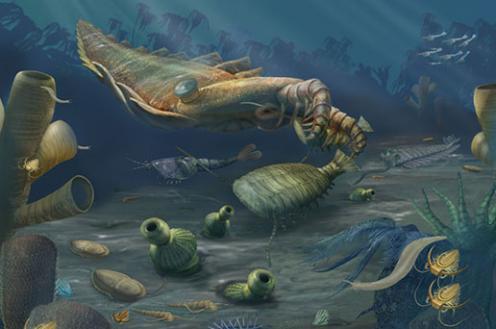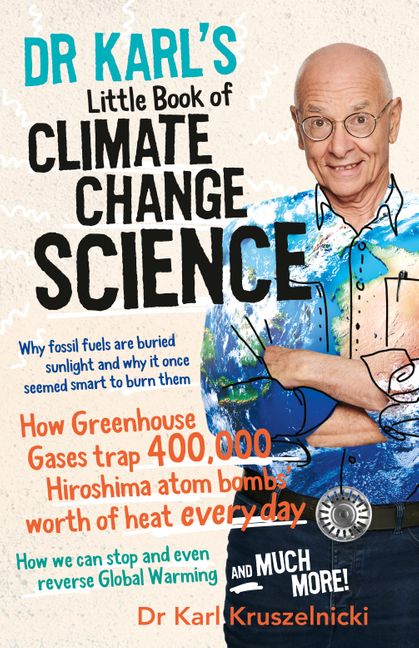Report on Continental Freshwater Loss and its Implications for Sustainable Development Goals
A recent study reveals that since 2002, terrestrial water loss from continents has become the primary contributor to global sea-level rise, surpassing the impact of melting ice sheets. This trend poses a significant threat to the achievement of multiple Sustainable Development Goals (SDGs), particularly those related to water, climate, and life on land and below water.
Key Findings on Global Water Depletion
Primary Drivers of Continental Drying
The accelerated loss of continental freshwater is attributed to two main factors, which directly undermine progress on SDG 6 (Clean Water and Sanitation) and SDG 13 (Climate Action):
- Groundwater Extraction: Unchecked extraction of groundwater from aquifers accounts for nearly 70% of the total water loss. This unsustainable practice transfers vast quantities of water from land to the oceans, depleting a critical resource for billions of people.
- Climate Change: Rising global temperatures accelerate evaporation rates, further exacerbating the drying of landscapes and contributing to the overall water deficit on continents.
Methodology
The findings are based on satellite data that measures minute changes in Earth’s gravitational field. These measurements allow for the detection of regional water mass changes on a scale of approximately 25 kilometers, providing a comprehensive view of continental water storage trends.
Global Impact Analysis and SDG Setbacks
The Emergence of Mega-Drying Regions
The study identifies that isolated “drying hotspots” are expanding and merging into continent-sized “mega-drying regions.” This consolidation represents a critical challenge to SDG 15 (Life on Land) and SDG 11 (Sustainable Cities and Communities). Four primary mega-regions have been identified in the Northern Hemisphere:
- A region spanning South Asia, including the area around the Himalayas.
- A vast area combining Alaska, northern Canada, and northern Russia, where drying is driven by permafrost thaw and ice melt.
- A region across Western Europe, primarily affected by persistent drought conditions.
- An expanding arid zone covering southwestern North America and extending into Central America, worsened by intensive groundwater pumping.
The analysis indicates that 101 countries, which are home to 75% of the global population, have experienced a net loss of freshwater over the last 22 years, severely impacting their capacity to meet development targets.
Profound Implications for Sustainable Development
The consequences of continental drying are wide-ranging and directly threaten the global sustainability agenda.
- SDG 2 (Zero Hunger): Increased water scarcity directly impacts food production, as more groundwater is required for irrigation to sustain crops and populations. This puts global food security at risk.
- SDG 6 (Clean Water and Sanitation): The depletion of groundwater, described as the “most important natural resource” in drying regions, creates severe water stress and threatens access to safe drinking water for communities worldwide.
- SDG 13 (Climate Action) & SDG 15 (Life on Land): The direct results of water loss and warmer temperatures include an increased frequency and severity of wildfires, biodiversity loss, and ecosystem degradation.
- SDG 14 (Life Below Water): The transfer of continental water to the oceans is a leading cause of sea-level rise, which endangers coastal communities and marine ecosystems.
Recommendations for Urgent Action
Revisiting Water Management Strategies
To mitigate these impacts, a fundamental shift in water management is required. The report calls for an urgent reassessment of current practices on a “war footing.” Key actions include:
- Phasing out inefficient methods such as flood irrigation to conserve groundwater resources, directly supporting the targets of SDG 6.
- Implementing policies that promote the efficient use of all water resources to ensure long-term sustainability.
Integrating Climate Mitigation Efforts
Addressing the root cause of accelerated evaporation requires robust climate action in line with SDG 13. Any progress made in mitigating climate change will directly contribute to stabilizing continental water storage and reducing the rate of drying.
In conclusion, failure to address the drivers of continental water loss will lead to irreversible environmental damage and make the achievement of the Sustainable Development Goals unattainable. Efficient resource management and decisive climate action are imperative.
1. SDGs Addressed in the Article
The article discusses several interconnected environmental issues, primarily focusing on water loss, its causes, and its consequences. These issues are directly relevant to the following Sustainable Development Goals (SDGs):
- SDG 6: Clean Water and Sanitation: The core theme of the article is the massive loss of freshwater from continents, driven by “unchecked groundwater extraction” and the resulting “water stress” in numerous regions.
- SDG 13: Climate Action: The article explicitly links the problem to “climate change,” which causes “rising rates of evaporation” and contributes to continental drying. It also mentions the need to “mitigate climate change” as a solution.
- SDG 14: Life Below Water: A major consequence highlighted is that water lost from continents has become the “biggest contributor to global sea level rise,” directly impacting oceans and coastal areas.
- SDG 15: Life on Land: The article details the degradation of terrestrial ecosystems through “continental drying,” the creation of “mega-drying regions,” “permafrost thaw,” and an increase in the “severity and frequency” of “wildfires.” It also notes the impact on “biodiversity.”
- SDG 2: Zero Hunger: The article connects water scarcity to food security, stating that drying “affects food production” and that “more groundwater will be needed to irrigate crops.”
2. Specific Targets Identified
Based on the article’s content, several specific targets within the identified SDGs can be pinpointed:
SDG 6: Clean Water and Sanitation
- Target 6.4: By 2030, substantially increase water-use efficiency across all sectors and ensure sustainable withdrawals and supply of freshwater to address water scarcity. This is addressed by the article’s focus on “unchecked groundwater extraction” and the suggestion to improve water use by “ending flood irrigation.”
- Target 6.5: By 2030, implement integrated water resources management at all levels. The article supports this by quoting a scientist who states, “Current water management efforts need to be revisited on a war footing.”
- Target 6.6: By 2020, protect and restore water-related ecosystems, including mountains, forests, wetlands, rivers, aquifers and lakes. The article’s entire premise is about the depletion of these ecosystems, particularly “deep aquifers.”
SDG 13: Climate Action
- Target 13.1: Strengthen resilience and adaptive capacity to climate-related hazards and natural disasters in all countries. The article highlights the increase in “wildfires” and “drought” as “a direct result of water loss and warmer temperatures” caused by climate change.
SDG 14: Life Below Water
- Target 14.2: By 2020, sustainably manage and protect marine and coastal ecosystems to avoid significant adverse impacts. The article connects continental drying directly to this target by identifying it as the “biggest contributor to global sea level rise,” which threatens coastal ecosystems.
SDG 15: Life on Land
- Target 15.1: By 2020, ensure the conservation, restoration and sustainable use of terrestrial and inland freshwater ecosystems. The study’s findings on “drying hotspots” and “mega-drying regions” describe a failure to meet this target.
- Target 15.3: By 2030, combat desertification, restore degraded land and soil, including land affected by desertification, drought and floods. The article describes this process in detail, noting that “three-quarters of Earth’s land became permanently drier in last 3 decades.”
SDG 2: Zero Hunger
- Target 2.4: By 2030, ensure sustainable food production systems and implement resilient agricultural practices. The article links water depletion to this target by explaining that it “affects food production” and requires more groundwater for crop irrigation.
3. Indicators Mentioned or Implied
The article provides several quantitative and qualitative indicators that can be used to measure progress towards the identified targets:
Indicators for SDG 6
- Level of water stress (Indicator 6.4.2): The article states that “101 countries — home to 75% of the world’s population — have been losing fresh water over the past 22 years.” It also identifies specific “drying hotspots” like the North China Plain and northwest India as experiencing high “rates of water loss.”
- Change in the extent of water-related ecosystems over time (Indicator 6.6.1): The study’s primary methodology, using satellites to measure “small mass changes on Earth” due to water loss from aquifers and continents, serves as a direct indicator of the declining extent of these freshwater ecosystems.
Indicators for SDG 13 & 14
- Number of deaths, missing persons and directly affected persons attributed to disasters per 100,000 population (related to 13.1.1): While not giving population numbers, the article points to an increase in the “severity and frequency” of “wildfires” and “droughts” as direct climate-related disasters.
- Rate of global mean sea level rise (related to SDG 14): A precise indicator is provided: “sea levels have risen by 3.5 inches (9 centimeters) over the past 25 years.”
Indicators for SDG 15
- Proportion of land that is degraded over total land area (Indicator 15.3.1): The article provides a clear statistic for this, stating that “three-quarters of Earth’s land became permanently drier in last 3 decades.” The expansion of “drying hotspots” into “mega-drying regions” is a qualitative indicator of the same.
4. Summary Table of SDGs, Targets, and Indicators
| SDGs | Targets | Indicators Identified in the Article |
|---|---|---|
| SDG 6: Clean Water and Sanitation | 6.4: Address water scarcity and ensure sustainable withdrawals. 6.5: Implement integrated water resources management. |
Level of water stress: “101 countries… have been losing fresh water over the past 22 years.” Rate of groundwater extraction: “unchecked groundwater extraction” in hotspots like the North China Plain and California’s Central Valley. |
| SDG 13: Climate Action | 13.1: Strengthen resilience to climate-related hazards. | Increased disaster frequency: “wildfires have increased in severity and frequency” as a result of water loss and warmer temperatures. |
| SDG 14: Life Below Water | 14.2: Protect marine and coastal ecosystems. | Rate of sea level rise: “sea levels have risen by 3.5 inches (9 centimeters) over the past 25 years.” |
| SDG 15: Life on Land | 15.1: Conserve and restore terrestrial and freshwater ecosystems. 15.3: Combat desertification and restore degraded land. |
Proportion of degraded land: “three-quarters of Earth’s land became permanently drier in last 3 decades.” Expansion of “mega-drying regions” across continents. |
| SDG 2: Zero Hunger | 2.4: Ensure sustainable food production systems. | Impact on agriculture: Continental drying “affects food production” and increases the need for groundwater to “irrigate crops.” |
Source: livescience.com






